Wildlife in Maine is such an adventure to look for. We love seeing manatees when we’re in Florida, but what we do not see ever in Florida are puffins, moose and all sorts of other northern creatures. We’ve got lots of tips on where to see wildlife in Maine as well as tours into moose country and picks for getting out onto the north Atlantic. A Maine road trip is perfect for seeing wildlife!
Maine is a wildlife lover’s paradise, with a diverse range of habitats and a wealth of animal species to discover. From the rocky coastlines with lighthouses and dense forests to the rolling hills and freshwater lakes, Maine offers endless opportunities to observe wildlife. Whether you’re an avid birder, a wildlife photographer, or simply like walking in the woods, there’s something for everyone when you’re looking for wildlife Maine’s great outdoors.
From moose and bears to eagles and puffins, the Maine’s abundant wildlife shows what the natural world of the Northeast really is like. If you have any questions or want to share your own info and tips for seeing wildlife in Maine, please leave a comment or send us a note. We’re always happy to share more.
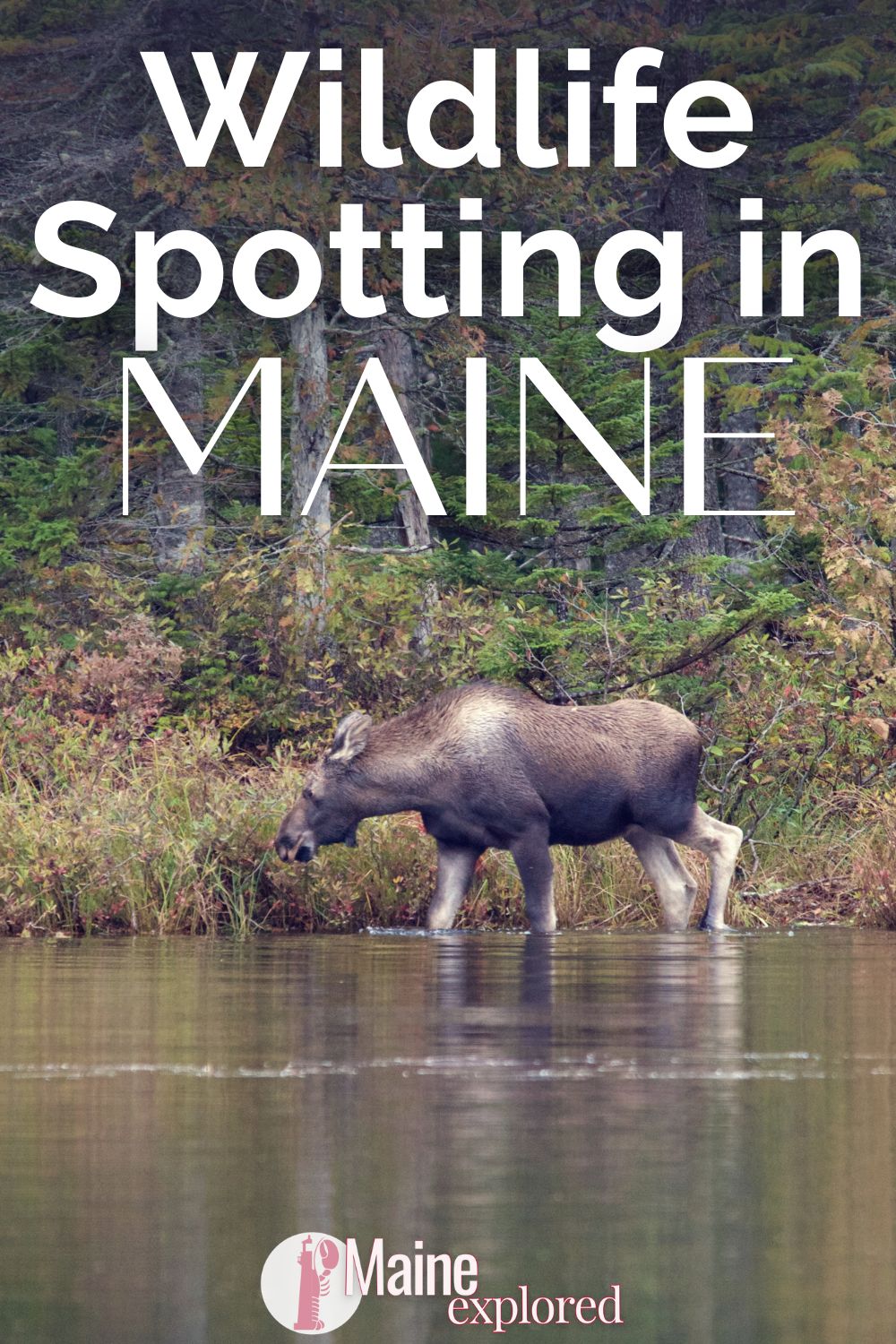
Wildlife Species to Spot Around Maine
Maine is home to a diverse range of wildlife, including many unique species that are not found in other parts of the United States. We live in Florida, so we’ve got cool creatures like alligators and manatees in the freshwater springs, and then there is amazing birdwatching in the Florida Keys, but in Maine it’s completely different. Instead of huge reptiles and Caribbean creatures, it’s a combo of woodsy big game and the marine life of stories like Moby Dick.
Here are some examples of wildlife in Maine to watch for when you visit:
- Moose – Maine has one of the largest moose populations in the United States, with an estimated 60,000 individuals. We’ve seen a lot more moose in Glacier National Park, Montana, but they’re here!
- Atlantic puffins – These distinctive birds can be found nesting on offshore islands and are a popular attraction for birdwatchers. You don’t even know how excited I get when I see one.
- Black bears – Maine is home to an estimated 35,000 black bears, which are commonly spotted in rural areas. Since the forests are more dense, they’re harder to spot here than, say, when you’re spotting wildlife in Yellowstone NP.
- Lynx – The Canada lynx is a rare and elusive species that can be found in the forests of northern Maine. I’ve only even seen one in Alaska, not here in Maine.
- Snowshoe hare – This species is well adapted to the harsh winters of Maine and can be found throughout the state.
- Bald eagle – This iconic bird of prey can be seen nesting along Maine’s coastline and inland lakes and rivers. Seeing eagles in Maine rivals the Skagit Valley in Washington.
- Seals – These marine mammals can be found along Maine’s rocky coastline, particularly in the winter months. We saw a ton of them while staying at the Samoset Resort in winter, at the Rockland Breakwater Lighthouse.
- Beluga whales – Although rare, these white whales have been spotted in the waters off Maine’s coast. I’ve never seen them here in Maine, but have seen them in Alaska!
- Woodchucks – Also known as groundhogs, these animals are found throughout Maine and are known for their burrowing habits.
- Fisher – A member of the weasel family, the fisher is a rare and elusive predator that can be found in the forests of northern Maine. Super cute! I hope you see one!
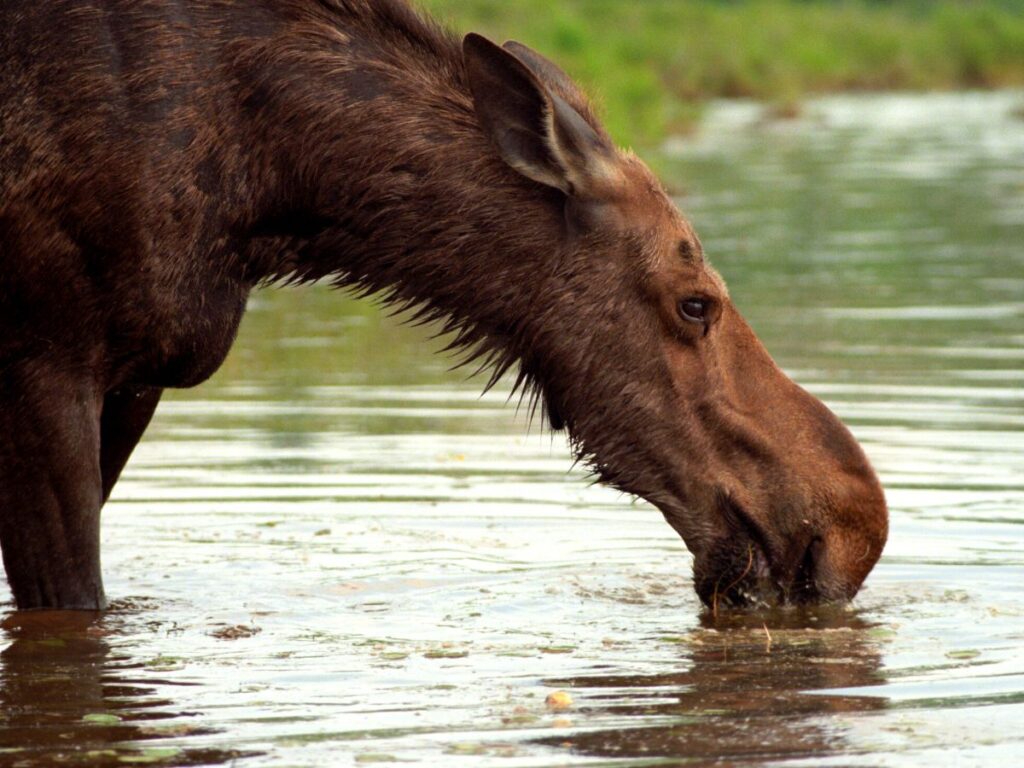
Where and When to See Moose in Maine
The Highlands of Maine are some of the best places in the United States to see moose in their natural habitat. While moose are one of the largest mammals in the world known for their impressive size and antlers, they can be hard to find. The Highlands go from northern Maine at the Canadian border down past Sunday River, including the Rangeley Lakes and Moosehead Lake regions. This is a great place to find either cabins or glamping in Maine.
Here are some tips on where and when to spot these majestic animals in Maine. PS: seeing a cow moose is cool too, even though they don’t have the huge racks that bull moose have. And when you see a cow moose, watch for a calf or two nearby!
Note: 2023 saw a HUGE decline in the moose calf population due to not enough ticks dying the previous winters. We talked with several people in the Maine Highlands that told us about moose calves dying from getting so many ticks on them that they were literally being depleted of so much blood they couldn’t live.
Where to See the Most Moose in Maine
The best places to see moose in Maine are in the northern and western regions of the state, particularly in the areas around Baxter State Park, Rangeley, and Greenville. This is what we refer to as the Highlands. The Carrabassett Valley around Sugarloaf ski area and stretching to the town of Strong is a great place to see moose, and it’s right in the middle of the Highlands.
All of these areas are known for their dense forests, bogs, and marshes, which provide ideal habitats for moose. When you’re looking for wildlife in Maine, especially moose, they don’t tend to just hang out off the main highways. You may need to take a gravel road or two before you spot one.
TIP: if you’re kayaking in Maine, the water’s edge is a great place to keep a lookout for wildlife, particularly moose. DO NOT APPROACH THEM but admire them from afar.

The Best Time of Day to See Moose
Moose are most active during the early morning and late afternoon, so these are the best times to look for them. They are also active at night, so driving on back roads during the evening can be a good strategy for spotting them.
The Best Season and Weather for Spotting Moose
The best season to see moose in Maine is during the fall, particularly in September and October, when the leaves begin to change and the moose come down from higher elevations to feed. Spring is also an excellent time to see moose, as they come out of the woods to feed on fresh vegetation.
Moose are most active on cool, damp days, particularly during the summer months when they seek relief from the heat. On sunny days, they tend to stay in the shade and are less likely to be seen.
The Best Methods for Spotting Moose
One of the best ways to see moose in Maine is by taking a guided moose-watching tour. These tours typically occur in the early morning or late afternoon and are led by experienced guides who know the best places to find moose. Alternatively, driving on back roads and keeping an eye out for moose crossings can be a good strategy, but be sure to drive slowly and be alert for other wildlife on the roads as well. Additionally, hiking in areas with high moose populations can increase your chances of spotting them.
It’s important to remember that moose are wild animals and should be observed from a safe distance. Do not approach or attempt to feed them, as this can be dangerous for you and the moose.
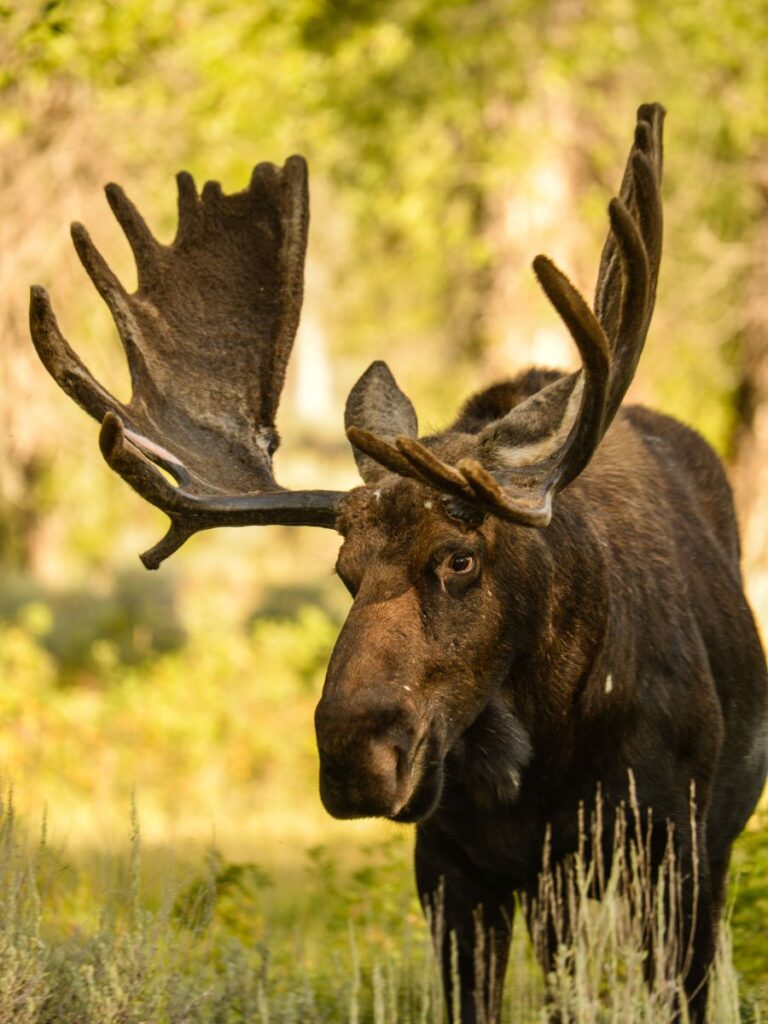
Where and When to see Atlantic Puffins in Maine
Atlantic puffins are a unique and beloved bird species that can be found nesting on several offshore islands in Maine. Atlantic Puffins are also social birds that nest in colonies (I don’t know, maybe they’re also called rookeries here), sometimes in the thousands. Their silly behavior and appearance make them a favorite of my kids (and me too). And to be clear, the puffin wildlife in Maine is the ATLANTIC PUFFIN.
If you ever get to visit Kenai Fjords National Park in Alaska, there you’ll see both tufted and horned puffins which are different from the Atlantic puffin. The horned puffin looks very similar though.Here are some tips on where and when to see these super cute birds.
Where to See Atlantic Puffins in Maine
The best places to see Atlantic puffins in Maine are on offshore islands in the Gulf of Maine, particularly Machias Seal Island, Eastern Egg Rock, and Matinicus Rock. These islands are located several miles offshore and can only be accessed by boat. You might be lucky and see lots of wildlife from the ferry out to Matinicus, but private boats and tours are a more guaranteed option. We’ve seen them from two different boat tours. (see below)
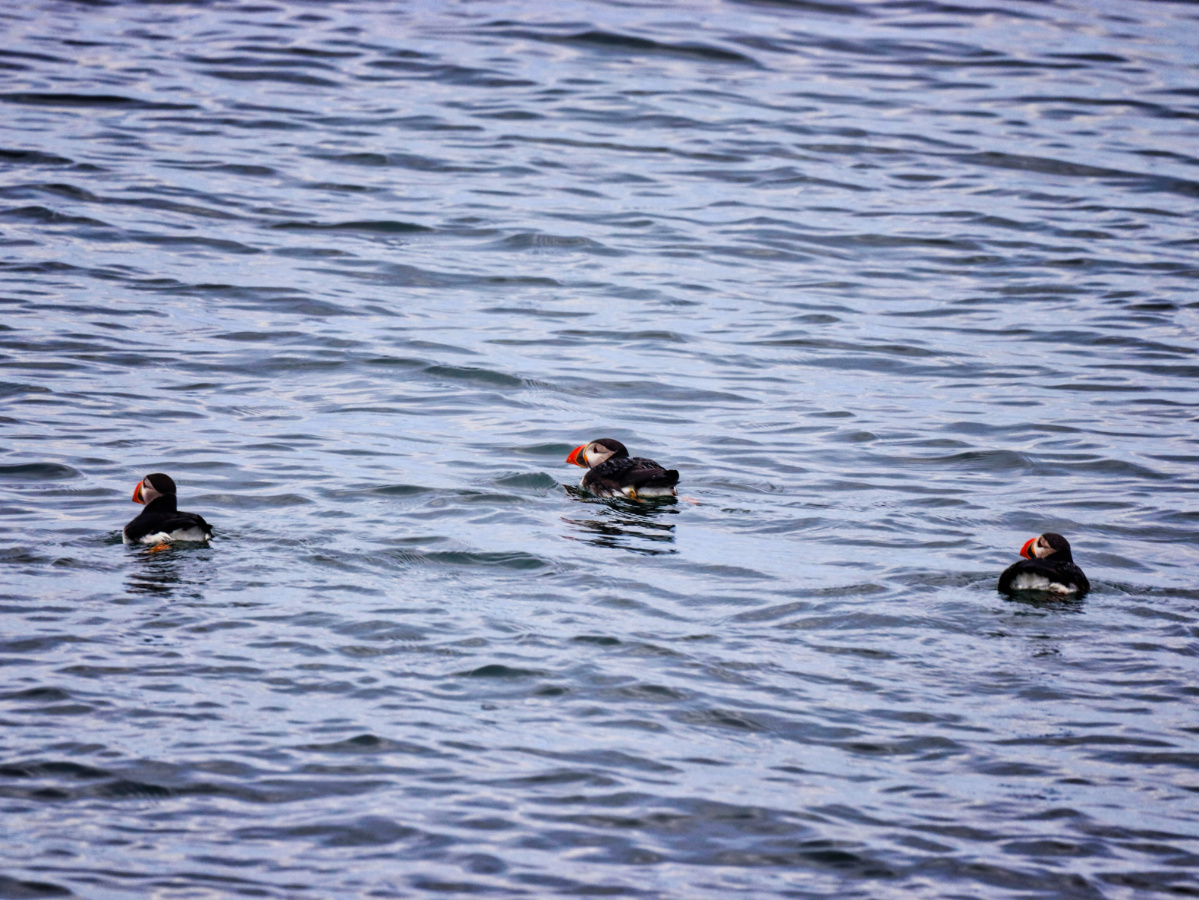
The Best Time to See Atlantic Puffins in Maine
The best time to see puffins in Maine is from late May to early August, when they nest on the offshore islands. During this time, puffins can be seen flying back and forth from the ocean to their nesting burrows and feeding their young.
The best time to see puffins is in the early morning or late afternoon when they are most active. Guided tours typically depart early in the morning to reach the islands during the puffins’ peak activity hours.
The Best Way to See Atlantic Puffins in Maine
The best way to see puffins in Maine is by taking a guided tour with a licensed boat operator. These tours typically depart from coastal towns such as Bar Harbor or Boothbay Harbor and can last several hours. They provide an opportunity to see puffins up close and learn about their behavior and habitat from experienced naturalists. Grab some local Maine whoopie pies and board a boat for a wildlife adventure!
TOP PICK #1: Cap’n Fish’s Cruises out of Boothbay Harbor was amazing. In addition to puffins we saw a fin whale, minke whales and two humpback whales. You can get more time out to sea by planning a joint puffin / whale watching tour. Maine wildlife of all kinds in one day! And you can add the Coastal Maine Botanical Gardens to a visit here.
TOP PICK #2: we had an awesome time going out with Monhegan Boat Line from Port Clyde. The tour went to Easter Egg Rock and we had PUFFIN SUCCESS! This trip also includes a lobstering demonstration and several lighthouse views.
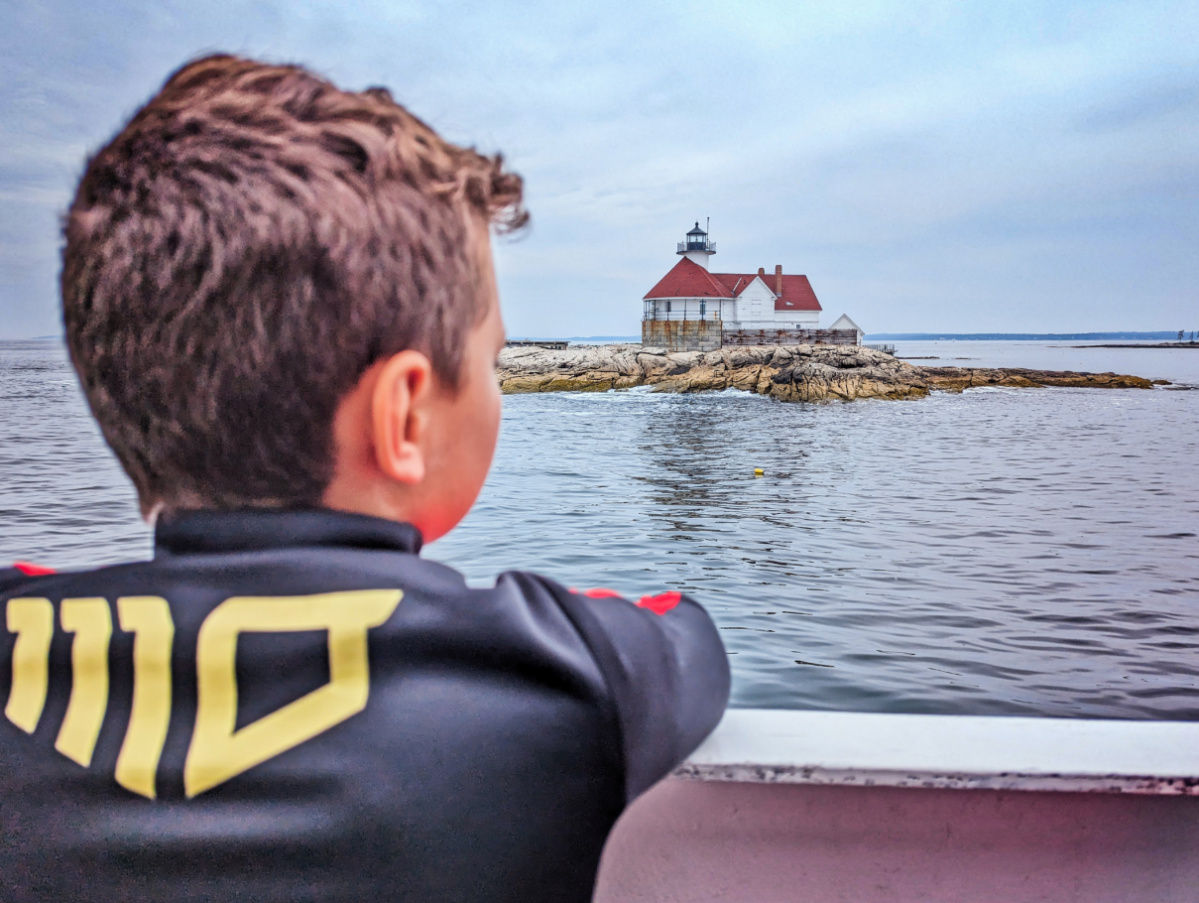
The Best Weather for Spotting Atlantic Puffins in Maine
It’s important to note that puffin tours are weather-dependent and may be canceled due to high winds or rough seas. Be sure to check the weather forecast before booking a tour, and be prepared for cooler temperatures and potentially wet conditions.
It’s important to remember that puffins are a protected species and should be observed from a safe distance. Do not approach them or attempt to touch them, as this can disturb their nesting behavior. Guided tours are designed to minimize disturbance to the birds while providing an educational and enjoyable experience for visitors. FYI, you cannot kayak where the puffins are, so don’t try. Protected habitats and remoteness are both prohibitive factors.
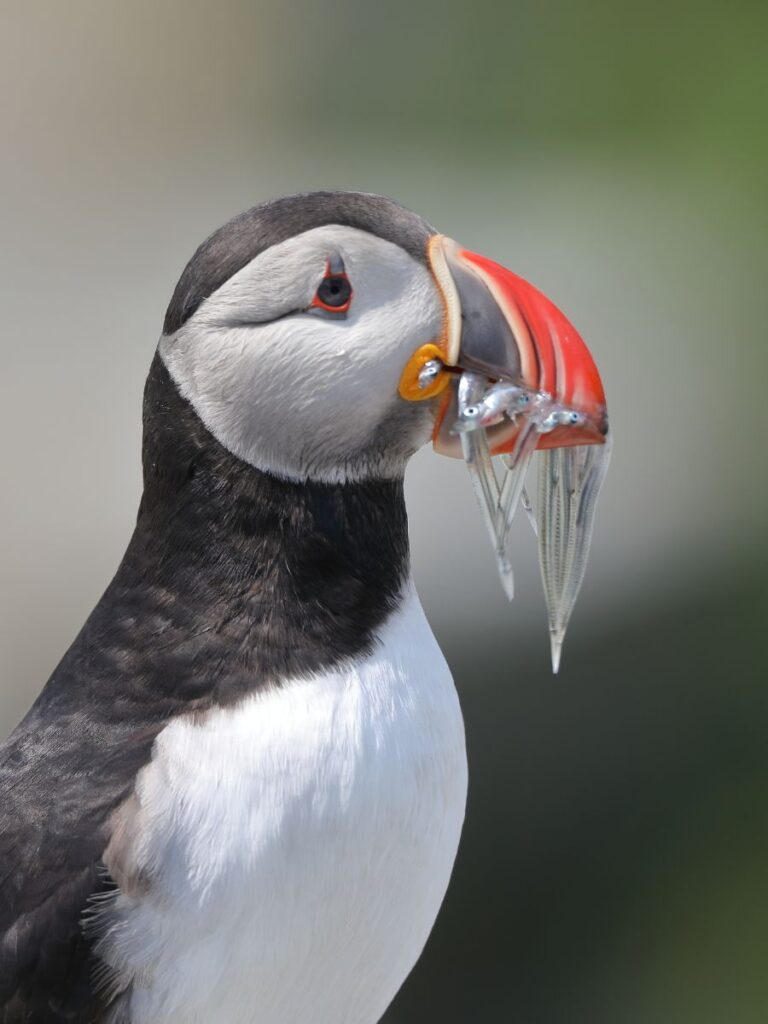
Birds You Might Misidentify as Puffins
While Atlantic puffins are a unique and distinctive bird, a few other seabirds can sometimes be mistaken for puffins, especially from a distance. Here are some birds in Maine that can be misidentified as puffins:
- Razorbills: These black and white birds are about the same size as puffins and have similar markings, with a distinctive black line running across their white faces. However, razorbills have a longer, thinner beak than puffins and lack the colorful beak plates that are a defining characteristic of puffins. You’ll know the difference when you see them.
- Surf Scoter: The surf scoter is a sea duck species found along the coasts of North America. It has a distinctive appearance with its large, colorful bill that is mostly black with an orange or yellow knob at the base. Surf scoters are strong swimmers and divers, feeding on mollusks and crustaceans in the ocean waters. I’ll admit that I once mistook the surf scoter for a puffin. [face palm from me]
- Black Guillemots: These small seabirds are also black and white but have a much slimmer profile than puffins and lack the bright colors of puffins’ beaks and feet. Black guillemots have a distinctive white wing patch that can help distinguish them from puffins.
- Common murres: These large seabirds have black and white plumage similar to puffins but lack the distinctive beak shape and colors. Common murres have a longer, thinner beak and lack the bright orange and yellow hues of puffins.
- Double-crested cormorants: These black birds with hooked beaks are much larger than puffins and lack the distinctive white and orange colors of puffins’ beaks and feet. However, from a distance, cormorants can sometimes be mistaken for puffins due to their similar coloring. We have these in Florida too and are one of my favorites to watch when we’re birdwatching in the Florida Keys.
Although there are quite a few birds in Maine that can be mistaken for puffins, a closer look at their distinguishing features, such as beak shape and color, will help you identify them correctly. It’s always a good idea to bring a field guide or binoculars when birdwatching to help make accurate identifications, especially if you’re on the prowl for puffins.
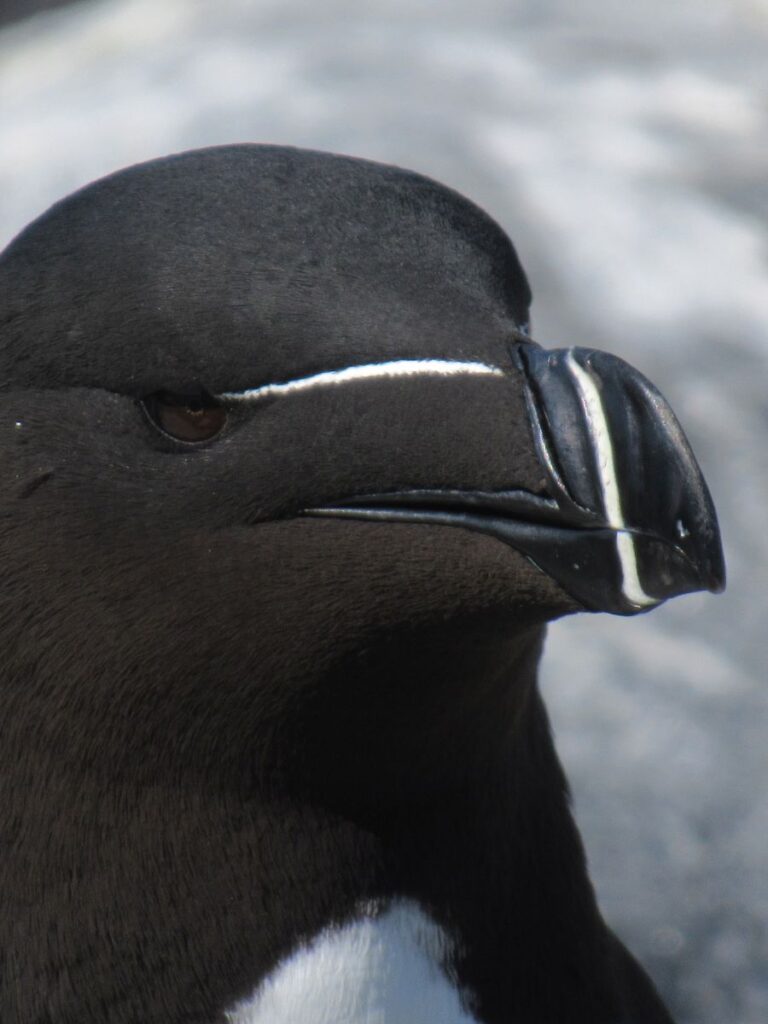
Where and When to see Bears in Maine
Did you know the black bear is the only species of bear found in Maine? There are no grizzlies so don’t worry if you don’t see one. Maine is home to a large population of black bears, and seeing one of these fluffy animals in the wild can be a bucket list wildlife experience if you stay safely back and just watch them. You’ve got great odds too as there are about 35,000-40,000 black bears living in the state. Here are some tips on where and when to see bears in Maine.
Where to See Black Bears in Maine
Black bears can be found throughout the state of Maine, but they are most commonly seen in rural areas with dense forest cover. Popular bear watching locations include Baxter State Park, the Allagash Wilderness Waterway, and the western mountains. Just like when you’re watching for wildlife in Yellowstone, creatures like to be in the less populated areas and up on hillsides away from people, so watch there!
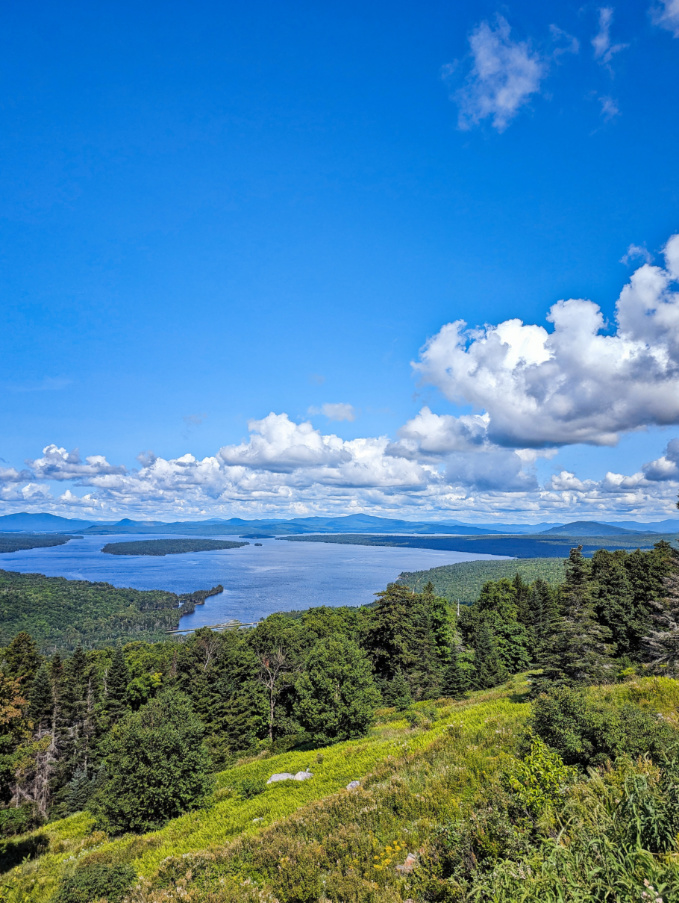
The Best Time of Day to See Black Bears in Maine
Black bears are most active during the early morning and late afternoon hours, so these are the best times to look for them. They are also active at night, so driving on back roads during the evening can be a good strategy for spotting them. I like to park near clearings with down trees, as bears tend to show up and root around this sort of spot, and I am patient, so I just sit and watch for them.
The Best Season to See Black Bears in Maine
The best time to see black bears in Maine is during the spring and early summer when they emerge from their winter dens and begin foraging for food. Fall can also be an excellent time to see bears as they prepare for hibernation by consuming large amounts of food. Maine has so many blueberries so whether you’re looking for wildlife in late summer or early fall, pay attention where the berries are!
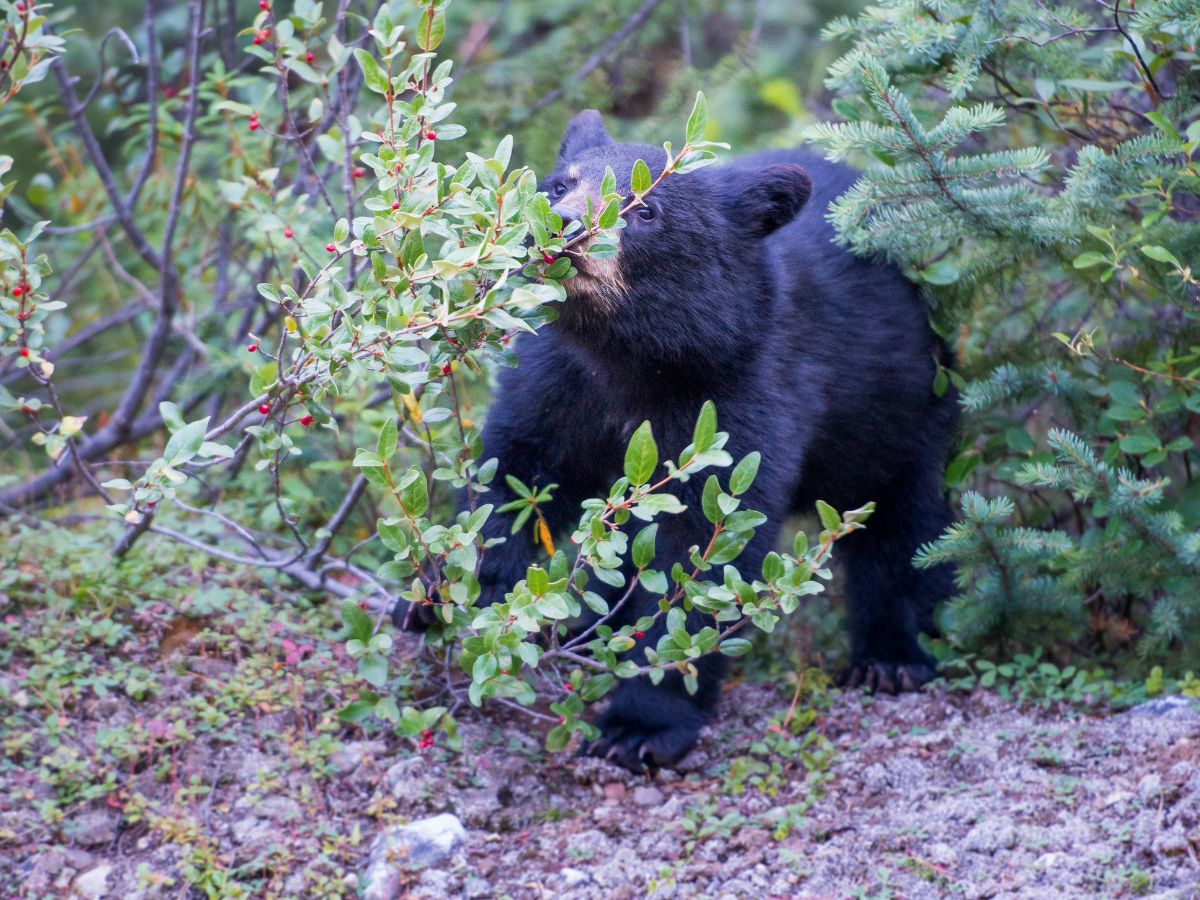
The Best Way to See Black Bears in Maine
The best way to see black bears in Maine is to drive slowly on back roads and keep an eye out for them. Binoculars or a spotting scope can be helpful in viewing bears from a safe distance. It’s important to remember that bears are wild animals and should be observed from a safe distance. Do not approach them or attempt to feed them, as this can be dangerous for both you and the bears.
Guided wildlife watching tours can also be a great way to see bears in Maine. These tours are led by experienced guides who know the best places to find bears and can provide information about their behavior and habitat. Some tours use wildlife viewing blinds or tree stands to get a closer look at bears in the wild.
It’s important to note that bears are unpredictable and can be dangerous if provoked. If you encounter a bear in the wild, give it plenty of space and do not approach it. If a bear appears to be aggressive or is acting abnormally, contact the Maine Department of Inland Fisheries and Wildlife for assistance.
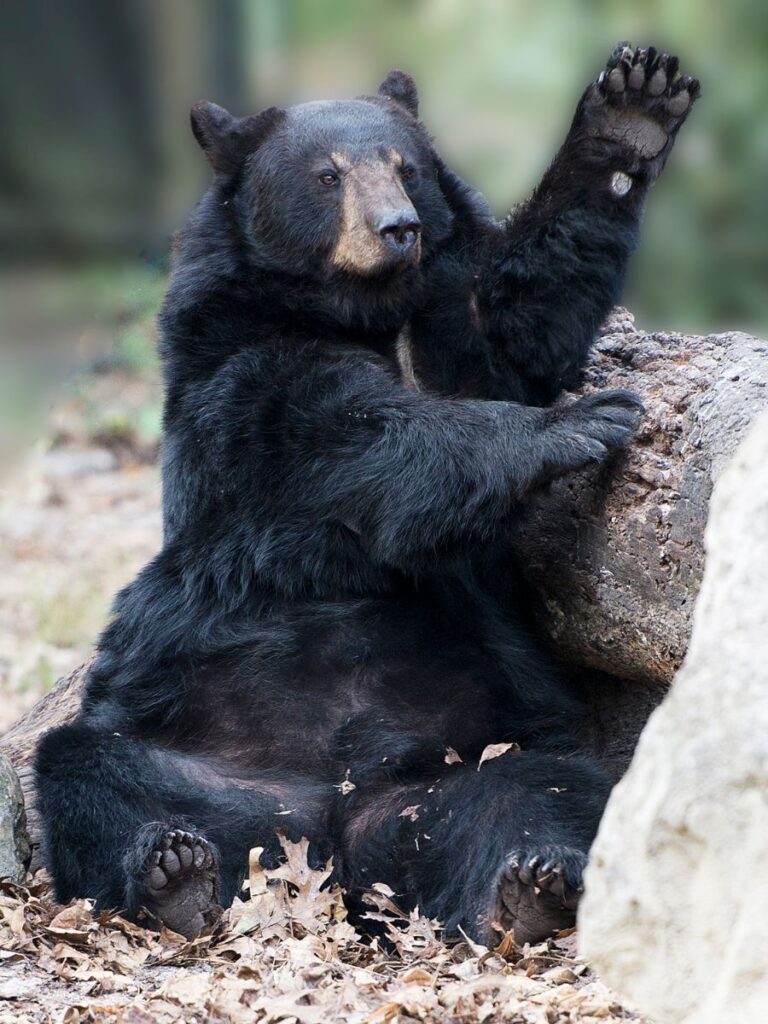
Where and When to see Eagles in Maine
Maine is home to two species of eagles: bald eagles and golden eagles. These impressive birds of prey can be seen in various parts of the state, but there are some key locations and times of year that offer the best chances of spotting them. Bald eagles are the most common and we’ve seen more in Maine than we could possibly count. Here are some tips on where and when to see eagles in Maine.
The Best Places to Spot Eagles in Maine
Bald eagles can be found throughout Maine, but they are most commonly seen near bodies of water such as rivers, lakes, and coastal areas. Some of the best places to see bald eagles in Maine include Moosehead Lake, the Kennebec River, and Acadia National Park. Golden eagles are less common in Maine, but can be seen in the western mountains and along the Canadian border.

The Best Time to Spot Eagles in Maine
The best time to see eagles in Maine is during the winter months, from December to February. During this time, many lakes and rivers are frozen over, which concentrates the eagles near areas of open water where they can hunt for fish. Bald eagles can also be seen during the summer months when they are nesting and feeding their young.
Eagles are most active during the early morning and late afternoon hours when they are hunting for food. Dawn and dusk are the best times to see eagles, as they are often perched in trees or on rocks near the water’s edge. Keep your eyes peeled along the riverbanks when it’s spawning season for salmon and the likes. Although Maine rivers don’t attract bald eagles like the Skagit Valley in Washington State does, the riverbanks may have quite a few birds chowing down when the fish are plentiful.
The Best Way to See Eagles in Maine
The best way to see eagles in Maine is to look for them from a distance using binoculars or a spotting scope. Many parks and wildlife areas have observation platforms or hiking trails that provide good vantage points for eagle watching. It’s important to remember that eagles are protected by federal law and should be observed from a safe distance.
Guided wildlife watching tours can also be a great way to see eagles in Maine. These tours are led by experienced guides who know the best places to find eagles and can provide information about their behavior and habitat. Some tours use boats to get a closer look at eagles along the coast or on lakes and rivers. If you’re up in Lubec at the West Quoddy Lighthouse, this is a great spot to see bald eagles.
Overall, seeing eagles in the wild can be a thrilling experience and a great way to connect with Maine’s natural beauty. By following these tips and being respectful of the eagles’ habitat, you can enjoy a safe and rewarding eagle watching adventure in Maine.

Does the Stellar Sea Eagle Migrate to Maine?
The Stellar’s sea eagle, also known as the Pacific eagle, is a large bird of prey that is native to eastern Russia, Japan, and China. In recent years, there have been sightings of these magnificent birds in Maine, which is considered unusual as they are not known to migrate to the eastern coast of North America. Here is some information about the Stellar’s sea eagle and its recent appearance in Maine.
Appearance, Habitat, and Range of the Stellar Sea Eagle
The Stellar’s sea eagle is one of the largest species of eagles, with a wingspan of up to 8 feet. They have distinctive black and white plumage, with a yellow beak and legs. Stellar’s sea eagles typically inhabit coastal areas and feed primarily on fish and other marine animals. The Stellar’s sea eagle is found primarily in eastern Russia, Japan, and China and is considered a rare species in North America.
Recent Sightings of the Stellar Sea Eagle in Maine
In recent years, there have been a handful of sightings of Stellar’s sea eagles in Maine. The first confirmed sighting was in 2012, when a juvenile bird was spotted in Harpswell, Maine. Since then, there have been a few more sightings, including one in 2021 in the town of Phippsburg and this year in Georgetown. Although stellar sea eagles aren’t common, they are a bucket list bird when it comes to wildlife in Maine.
It is not clear why Stellar’s sea eagles are making their way to Maine, but there are a few theories. One possibility is that the birds are being pushed eastward by climate change, as rising temperatures and changing weather patterns alter their traditional habitat. Another possibility is that the birds are following their prey, such as herring and other fish species, which may be moving into new areas due to environmental changes.
Conservation Status of the Stellar Sea Eagle
The Stellar’s sea eagle is classified as vulnerable by the International Union for Conservation of Nature, due to habitat loss and hunting in some areas. Their appearance in Maine is a reminder of the importance of protecting and preserving these magnificent birds and their habitat.
While sightings of Stellar’s sea eagles in Maine are still rare, they offer a glimpse into the dynamic and ever-changing world of wildlife migration and adaptation. With continued attention to conservation efforts and awareness of the impacts of climate change, we can help ensure that these and other remarkable species continue to thrive in the wild.
Can the Mola Mola Fish be Seen in Maine’s Waters?
The ocean sunfish, or Mola Mola, is a large, distinctive fish that can be found in Maine’s waters during the summer months. These fish are known for their unique appearance, with a flattened, disc-shaped body that can reach up to 10 feet in length and weigh up to 2,000 pounds. Mola mola can often be seen basking near the surface of the water, where they are sometimes mistaken for sharks due to their large dorsal fin.
While they are found in Maine’s waters throughout the summer, the best time to see them is typically in August and September, when they are more commonly seen closer to shore. Look for them in areas with abundant plankton and jellyfish, which make up a significant portion of their diet. In recent years Mola Mola have been spotted off the coast of Acadia National Park.
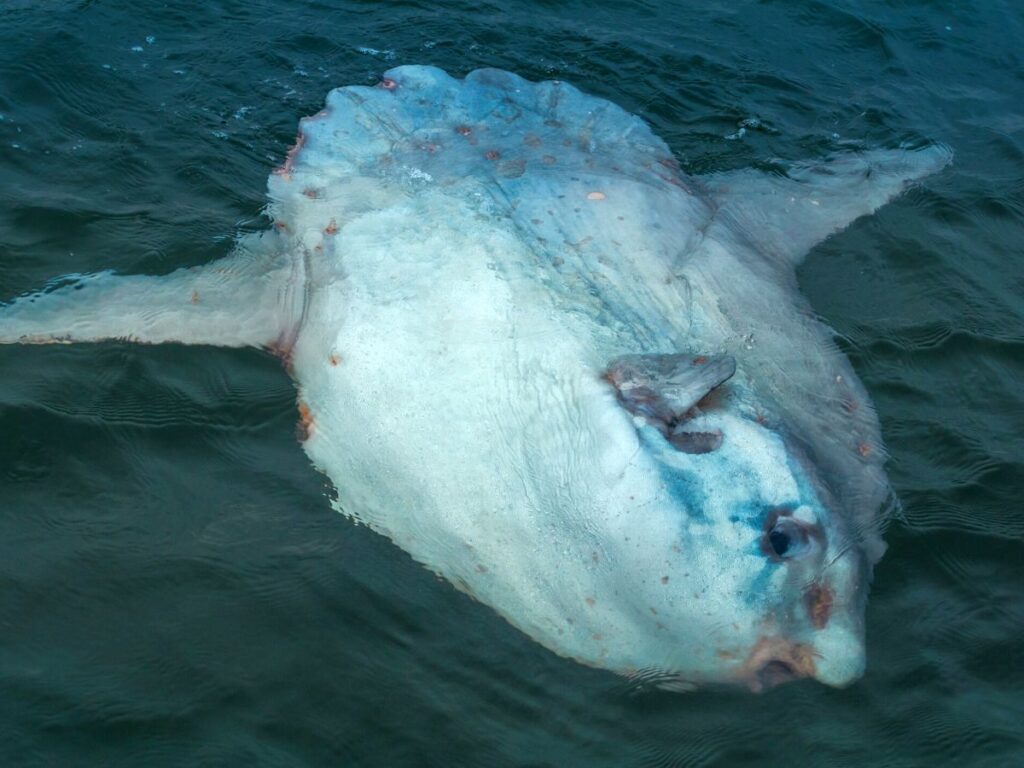
We always get so excited to see wildlife in Maine, or anywhere for that matter. I think seeing animals in the wild is just as thrilling, if not more so, for adults as it is for kids. When you’re planning your trip to see moose and bear, be sure to be well prepared with binoculars, a telephoto lens and lots of patience. If you have any questions about looking for wildlife in Maine or need a tour recommendation, please leave a comment or send us a note. We’re always happy to help!
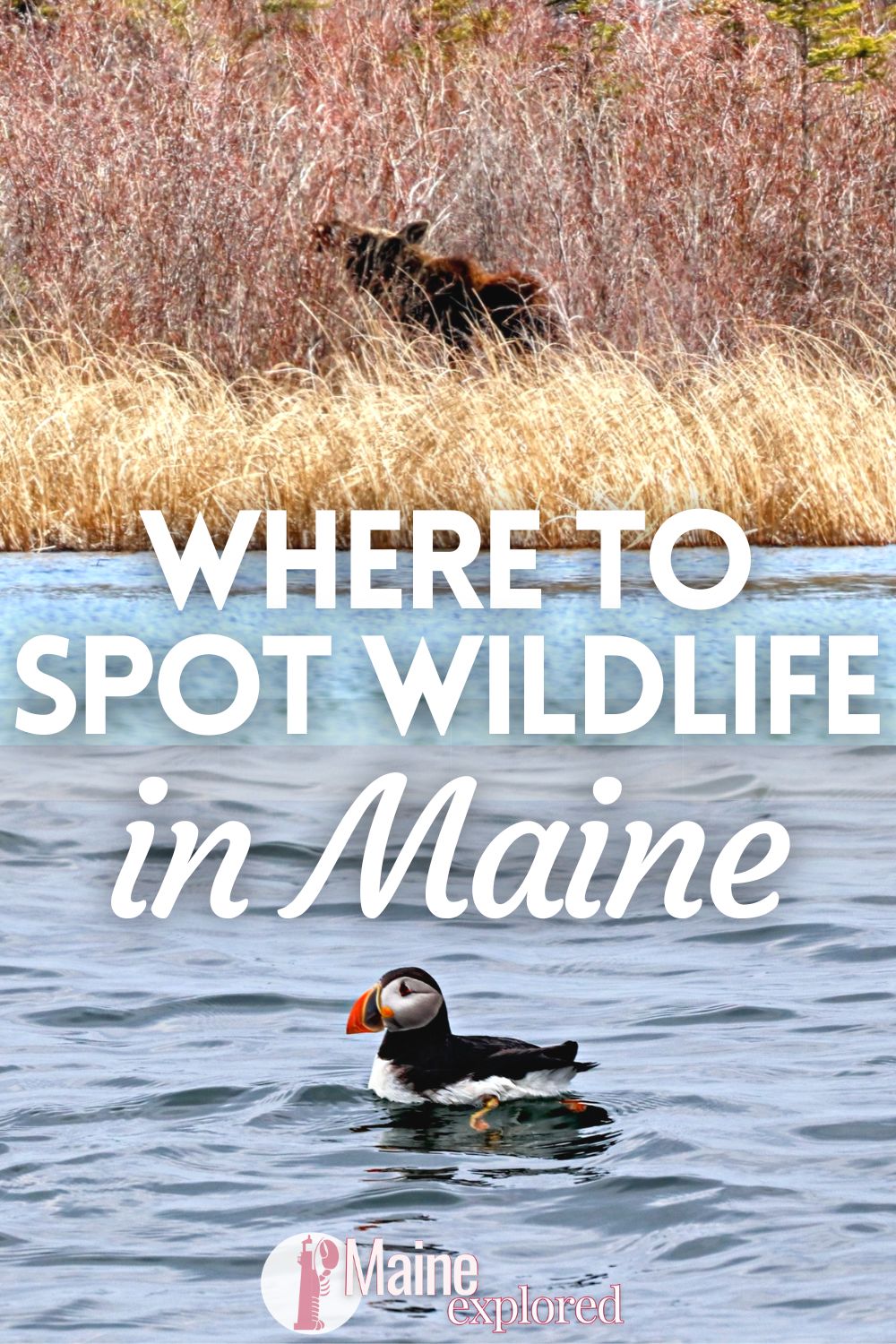


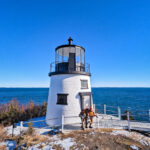
Pingback: Tips for Having a Great Experience
Pingback: Guide to the Coastal Maine Botanical Gardens in Boothbay Harbor
Pingback: 3 Day Acadia National Park Itinerary: Flexible Plan for a Great Visit
Pingback: Beautiful West Quoddy Lighthouse – the Easternmost Point in the USA - Maine Explored